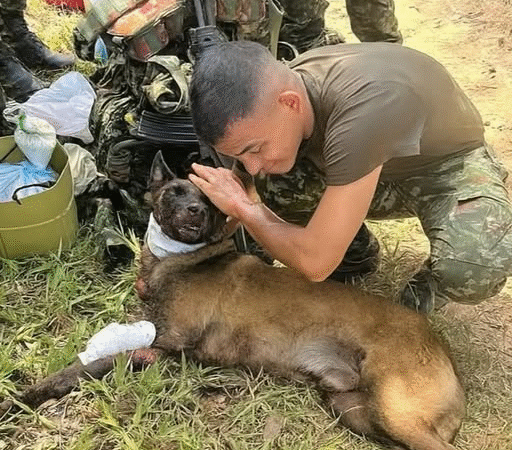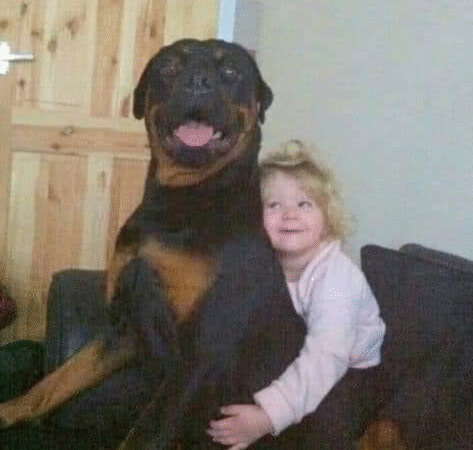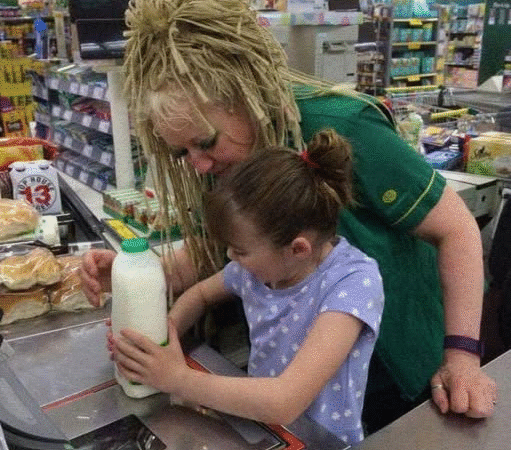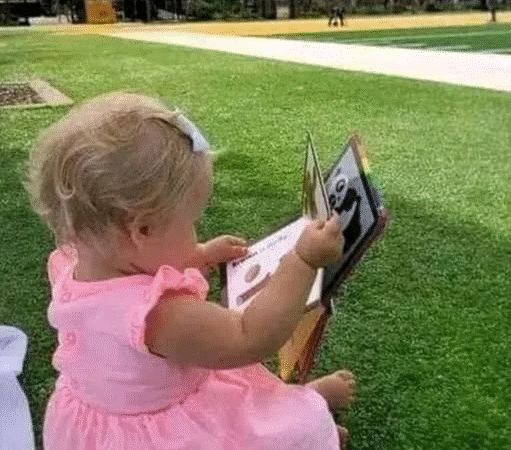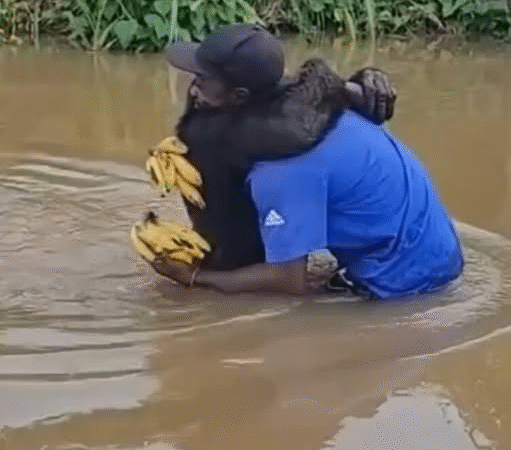The Last Push: A Leatherback’s Fight for Life…d

The early morning sun was already blistering, casting long, hot shadows over the quiet beach in Equatorial Guinea. And there, motionless in the sand, was something ancient—something immense. A leatherback sea turtle. Her body stretched nearly six feet, her thick, ridged shell dusted with grit and tangled bits of jungle. But it wasn’t her size that stopped the team in their tracks. It was her stillness.
She was wedged—trapped between the gnarled base of a tree and the dense, unforgiving brush of the jungle. Her flipper, slick with blood, lay twisted against bark she had stripped raw in desperation. Her skin, normally dark and smooth, was flushed an alarming shade of pink—scorched by hours under the tropical sun. Her eyes, vacant and glassy, stared into nothing.
She had come ashore to nest, as her kind has done for millions of years. Leatherbacks—ancient mariners of the sea—emerge from the water under cover of night to dig their nests, lay their eggs, and return before sunrise. But something had gone wrong. Perhaps disoriented. Perhaps frightened. She had veered too far inland and become stuck.
Alone, she wouldn’t have made it. The heat. The injury. The exhaustion.

But she wasn’t alone anymore.
A team of conservationists, part of a local monitoring effort, spotted her just in time. They didn’t hesitate.
One ran for water. Another knelt by her side, whispering—perhaps for her, perhaps for themselves. They doused her scorched skin with saltwater, creating instant clouds of steam as the heat lifted. The others began coaxing the tree—leaning, shifting, moving earth with bare hands. Bit by bit, they cleared a path.
She didn’t fight them. She couldn’t. But the moment the tree gave way, the moment they guided her flipper free, something changed.
She moved.
First a twitch. Then a deep, shuddering breath. Then, slowly—agonizingly slowly—she began to push.
The group stood in silence as she inched forward, dragging her massive body across the sand. And then, with a final heave, the waves reached her.
Salt met skin. Movement returned. Strength returned.
And in a flash of foam and power, she disappeared—back into the sea that had shaped her ancestors for 100 million years.
She lived.

This leatherback sea turtle, this relic of a world long before ours, was given a second chance. But not all are so lucky. Her kind faces threats at every turn—fishing nets that strangle, plastic bags that mimic jellyfish, poachers who steal the next generation from beneath the sand.
The team watched the ocean churn for a moment, waiting to see if she might resurface—just once. But she was gone, absorbed into the endless blue.
No cheers. No applause. Just breathless awe.
Someone finally exhaled. Someone else wiped a tear. The youngest volunteer—barely twenty—stood barefoot in the sand, salty water lapping at her ankles, and whispered, “She made it.” The older conservationist beside her nodded, his voice rough: “This time.”
They gathered their gear in silence. The relief of the rescue was tempered by the weight of reality. This leatherback was only one. One story. One life. One lucky escape.
But for that one—everything changed.
Back at their base, the team documented the incident: temperature readings, GPS coordinates, condition notes, and photos for records. They submitted the data to global monitoring efforts, part of a larger mosaic of researchers working tirelessly to protect one of Earth’s last ancient mariners. Their efforts weren’t glamorous. Often unpaid. Frequently exhausting. But moments like this—when life beat the odds—made it all worth it.
That night, they walked the beach again.
Leatherbacks often return to the same stretch of sand, and though unlikely, part of them hoped to see her. They watched as another turtle—smaller, younger—emerged under the cloak of night and began to dig. The moon shimmered on her carapace as her flippers scooped sand in rhythmic, deliberate movements. Dozens of eggs would soon be hidden beneath the surface, left to fate and time.
The team stayed back, observing quietly.
It was hard not to think about what those eggs would face. The odds were merciless. Only about one in a thousand sea turtle hatchlings survives to adulthood. Between predators, pollution, and human interference, most won’t make it. But some would.
And so, the work continued.
They set up barriers to shield the nest. Logged the site. Notified local authorities. In the distance, the waves whispered, relentless and eternal.
That rescued turtle—scorched and bleeding just hours before—had reminded them why they were here. Why this mattered. Why they chose this life of night watches and early mornings, of heartache and hope.
Because sometimes, one life is the whole world.
And sometimes, saving one means saving more.
The next day, the team returned to find faint, deep tracks curving from the jungle to the ocean’s edge. Not from a trapped turtle—but from one that had come, nested, and returned to the sea without incident. They couldn’t know for sure… but part of them believed it was her.
That she came back.
That she laid her eggs.
That the story didn’t end with survival—but continued with renewal.
They smiled at the possibility.
And then they got back to work.
Because conservation isn’t a moment. It’s a mission.
And as long as the leatherbacks return to these beaches, someone must be there to meet them—not just to save them, but to bear witness to their resilience.
To kneel beside them in the heat.
To whisper to them in the quiet.
To carry water when the sun is too cruel.
To clear a path when the world becomes too tangled.
And to believe—fiercely—that even a creature born of the dinosaur age still has a place in our future.
If we fight for it.

She should’ve been in the sea by sunrise.
But instead, she lay still—wedged between a tree and the jungle, baking in the heat.
A leatherback turtle, ancient and immense, her flipper torn, her shell dusted in grit, her eyes glazed and empty.
She had come ashore to nest. But she got stuck.
And she was dying.
Until someone found her.
A team of conservationists saw her and ran—no hesitation.
They brought water.
They whispered.
They pushed.
And slowly… she moved.
A twitch. A breath.
And then, dragging her massive body toward the tide,
she reached it.
Salt met skin.
And in a rush of foam and power,
she was gone—
alive.
Not all get that chance.
Her species faces threats every day.
But on that morning,
one turtle was saved—
because someone showed up.
![]() Full story in the comments.
Full story in the comments.
